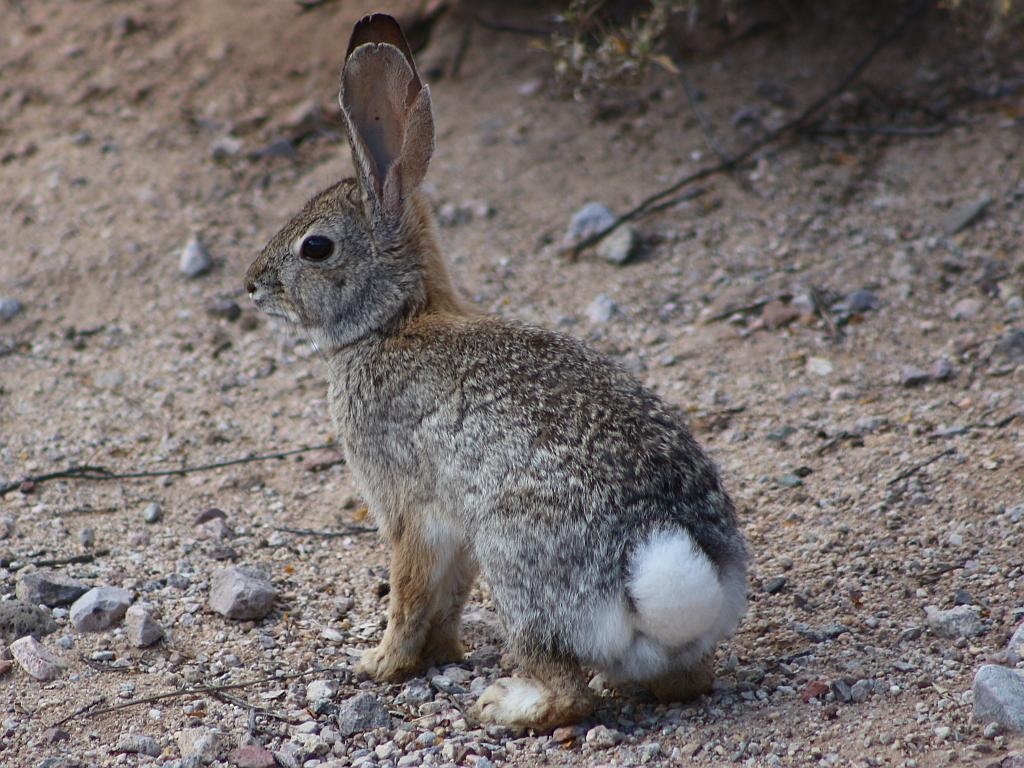There are literally dozens of these Sylvilagus audubonii on and around the property. I photographed this one as it was feeding up in the wash behind the RV drive. It paused feeding long enough to strike this pose as it became alert to my presence when I pointed the telephoto lens some 30 feet away. It resumed its feeding shortly thereafter.
From Wikipedia:
The desert cottontail is found throughout the western United States from eastern Montana to western Texas, and in northern and central Mexico. Westwards its range extends to central Nevada and southern California and Baja California. It is found at heights of up to 2,000 m (6,600 ft). It is particularly associated with the dry near-desert grasslands of the American southwest; though it is also found in less arid habitats such as pinyon-juniper forest.
The desert cottontail is quite similar in appearance to the European rabbit, though its ears are larger and are more often carried erect. It is also social among its peers, often gathering in small groups to feed. The desert cottontail uses burrows made by rodents rather than making its own. Like all cottontail rabbits, the desert cottontail has a rounded tail with white fur on the underside which is visible as it runs away. It is a light grayish-brown in color, with almost white fur on the belly. Adults are 33 to 43 cm (13 to 17 in) long and weigh up to 1.5 kg (3.3 lb). The ears are 8 to 10 cm (3.1 to 3.9 in) long, and the hind feet are large, about 7.5 cm (3.0 in) in length). There is little sexual dimorphism, but females tend to be larger than the males, but have much smaller home ranges, about 4,000 square metres (1 acre) compared with about 60,000 square metres (15 acres) for a male.
Camera: Canon EOS Rebel SL1, 1/400s, F5.6, ISO 200, 300mm focal length.

